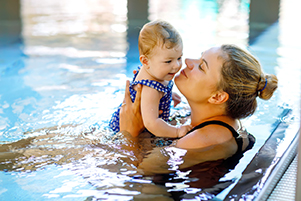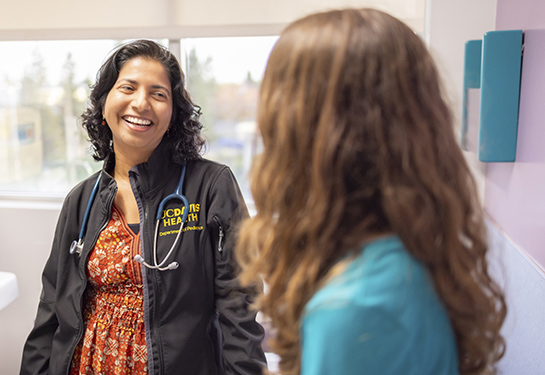10 tips to protect your child from drowning
Adult supervision key with swimming activities for children
With the weather heating up, many families are heading to nearby swimming pools, rivers or the ocean. But drowning claims thousands of lives each year.

Consider:
- More than 1 in 5 fatal drowning victims are children 14 and younger.
- For every child who dies from drowning, another five receive emergency department care for near drownings.
- Death from drowning remains the leading cause of accidental injury-related death for children ages 1 to 4.
“Pick an adult that knows how to swim to watch the kids in the pool. Kids under age 5 should have an adult within arm’s reach in the water,” said Jennifer Rubin, Safe Kids Greater Sacramento Coalition coordinator and injury prevention specialist at UC Davis Health. “Toddlers will also be attracted to the water on days when no one is swimming, so keep a close eye on them and communicate with other adults about who is supervising them.”
Drowning prevention includes keeping a close watch on younger children in the house, as well. Children under age 1 are more likely to drown in bathtubs, buckets or toilets.
In addition, this year’s heavy rain and snow provides new danger.
“It means that our local rivers and lakes will feel colder and flow faster this summer,” Rubin said. “Even the strongest swimmers need a life jacket in the river.”
Older teens, especially males between the ages of 15 and 19, are also at a high risk of drowning. Drowning deaths in this age group most often occur in rivers, lakes and oceans. Boat-related injuries account for a fifth of these cases. Often, these accidents are a result of high-risk behavior, drugs or alcohol.
Prevention tips
The most important thing to remember is that there is no substitute for your undivided attention. A drowning can occur in seconds. Most young children who drown in pools were last seen in the house less than five minutes before the drowning occurred. Most of the time one or both parents are home.
While your child is swimming, watch them at all times. Even looking at your cellphone at poolside could be enough time for a child to drown.
Here are tips for kids at home if you have a pool:
- Air-filled or foam toys, such as water wings, noodles or inner tubes, should not be used in place of life jackets (personal flotation devices). These toys are not designed to keep swimmers safe.
- Keep the pool area completely enclosed with a fence at least five feet high. An iron fence with vertical bars three inches apart and horizontal bars no closer than 45 inches together is recommended.
- Pool covers and pool alarms can be helpful but do not serve as a substitute for a good fence. Children can become trapped under soft pool covers and can easily drown.
- All gates around the pool should be self-closing and self-latching. The latch should be near the top of the fence.
Here are tips at the river, lake or ocean:
- Children should always wear a life jacket when around natural bodies of water. Parents and other adults should set a good example by always wearing theirs. Sacramento County law requires all children under age 13 to wear a life jacket in all public waterways. Sacramento County also has a free life jacket program.
- Be aware of situations that are unique to open water, such as limited visibility, depth, uneven surfaces, currents and undertow.
- Know how to swim out of a rip current.
- Talk with teens about the dangers of diving into the river from rocks or bridges. Explain why alcohol and drugs make it even more likely for a fatal drowning to occur.
Lastly, the American Academy of Pediatrics recommends that families learn infant, child and adult CPR. Children 4 years and older should also take swimming lessons.
Resources
Safe Kids: Water Safety
AAP: Drowning prevention and water safety



